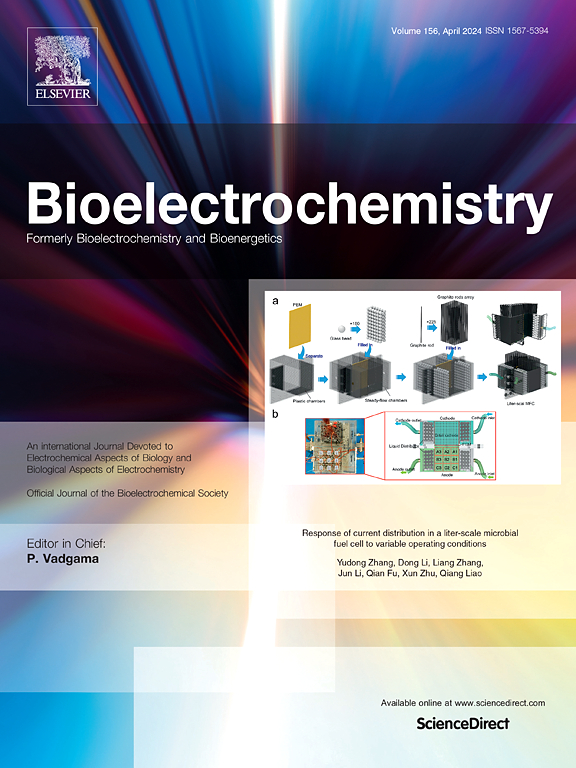Inside out: Exploring edible biocatalytic biosensors for health monitoring
IF 4.8
2区 化学
Q1 BIOCHEMISTRY & MOLECULAR BIOLOGY
引用次数: 0
Abstract
Edible biosensors can measure a wide range of physiological and biochemical parameters, including temperature, pH, gases, gastrointestinal biomarkers, enzymes, hormones, glucose, and drug levels, providing real-time data. Edible biocatalytic biosensors represent a new frontier within healthcare technology available for remote medical diagnosis. The main challenges to develop edible biosensors are: i) finding edible materials (i.e. redox mediators, conductive materials, binders and biorecognition elements such as enzymes) complying with Food and Drug Administration (FDA), European Food Safety Authority (EFSA) and European Medicines Agency (EMEA) regulations; ii) developing bioelectronics able to operate in extreme working conditions such as low pH (∼pH 1.5 gastric fluids etc.), body temperature (between 37 °C and 40 °C) and highly viscous bodily fluids that may cause surface biofouling issues. Nowadays, advanced printing techniques can revolutionize the design and manufacturing of edible biocatalytic biosensors.
This review outlines recent research on biomaterials suitable for creating edible biocatalytic biosensors, focusing on their electrochemical properties such as electrical conductivity and redox potential. It also examines biomaterials as substrates for printing and discusses various printing methods, highlighting challenges and perspectives for edible biocatalytic biosensors.
由内而外:探索用于健康监测的可食用生物催化生物传感器。
可食用生物传感器可测量各种生理和生化参数,包括温度、pH 值、气体、胃肠道生物标志物、酶、激素、葡萄糖和药物水平,并提供实时数据。可食用生物催化生物传感器代表了医疗保健技术的一个新领域,可用于远程医疗诊断。开发可食用生物传感器的主要挑战是:i) 寻找符合食品和药物管理局(FDA)、欧洲食品安全局(EFSA)和欧洲药品管理局(EMEA)规定的可食用材料(即氧化还原介质、导电材料、粘合剂和生物识别元素,如酶);ii) 开发能够在极端工作条件下运行的生物电子器件,如低 pH 值(pH 1.5 胃液等)、体温(37 °C至40 °C)和高粘度体液等极端工作条件下工作的生物电子器件,这些条件可能会导致表面生物污染问题。如今,先进的打印技术可以彻底改变可食用生物催化生物传感器的设计和制造。本综述概述了有关适合制造可食用生物催化生物传感器的生物材料的最新研究,重点关注其电化学特性,如导电性和氧化还原电位。它还研究了作为印刷基底的生物材料,并讨论了各种印刷方法,突出强调了可食用生物催化生物传感器所面临的挑战和前景。
本文章由计算机程序翻译,如有差异,请以英文原文为准。
求助全文
约1分钟内获得全文
求助全文
来源期刊

Bioelectrochemistry
生物-电化学
CiteScore
9.10
自引率
6.00%
发文量
238
审稿时长
38 days
期刊介绍:
An International Journal Devoted to Electrochemical Aspects of Biology and Biological Aspects of Electrochemistry
Bioelectrochemistry is an international journal devoted to electrochemical principles in biology and biological aspects of electrochemistry. It publishes experimental and theoretical papers dealing with the electrochemical aspects of:
• Electrified interfaces (electric double layers, adsorption, electron transfer, protein electrochemistry, basic principles of biosensors, biosensor interfaces and bio-nanosensor design and construction.
• Electric and magnetic field effects (field-dependent processes, field interactions with molecules, intramolecular field effects, sensory systems for electric and magnetic fields, molecular and cellular mechanisms)
• Bioenergetics and signal transduction (energy conversion, photosynthetic and visual membranes)
• Biomembranes and model membranes (thermodynamics and mechanics, membrane transport, electroporation, fusion and insertion)
• Electrochemical applications in medicine and biotechnology (drug delivery and gene transfer to cells and tissues, iontophoresis, skin electroporation, injury and repair).
• Organization and use of arrays in-vitro and in-vivo, including as part of feedback control.
• Electrochemical interrogation of biofilms as generated by microorganisms and tissue reaction associated with medical implants.
 求助内容:
求助内容: 应助结果提醒方式:
应助结果提醒方式:


